
 |
|
Camping All the Right Gear to Survive I thought I was over camping. Well and truly. I had done it for years with children. Then repeated the whole saga with stepchildren. I vowed ‘never again!’ Then I got into motorcycling. Not that camping is an obligatory dimension of motorcycling. In fact, on the first few rallies I attended, I felt absolutely no nostalgia, empathy or allurement relating to camping; if anything, all I felt was a staggering incredulity that otherwise sensible people of such mature age would choose to camp. The town pubs became havens of indulgent comfort for those of us who preferred that option. But, gradually, the lure of the outback or the ‘call of the wild’ started to penetrate my otherwise contented persona.
It wasn’t a huge leap from this revelation to acceptance of the role that camping would play. The Camping Kit and Kaboodle (or is that Caboodle?) The real work on researching and compiling my camping kit and caboodle came with preparations for my Big Trip North. You can read about plans, change of plans and the revised trip on that page. While all stages of planning involved staying in country town pubs where possible, especially in the early, winter stages, some camping would be inevitable. A factor for consideration was that, even heading north out of the southern winter, overnight desert temperatures could very low. So that suggested a reasonably good tent and appropriate sleeping bag. Once in the far northern latitudes, it’ll be all different again. Darwin, for example, is typically 32°C all year round. It’s just that it’s 32° and sunny for six months and 32° and raining for the other six months. I’ll be there in the sunny season! Options and Choices I don’t want to go over well-trodden ground here – at least, not too much. As part of my own preparations for the trip, I looked at several motorcycle touring and hiking websites, delved into adventure rider forums, and checked through past copies of the Australian Road Rider (marvelling at the esoteric and philosophical allusions I found there). Through a combination of intelligence gleaned from those sources and my own perceptions, preferences and needs, I came up with the following. I quickly decided that I did not want a swag of any sort. Too bulky and too claustrophobic for my liking. But each to his or her own. Size, weight and price were the key criteria. I equally quickly reached the conclusion that a two-person (as opposed to a one-person) tent was the go. Some extra room for stuff, as well as some space to lie around in, if need be, perhaps because of bad weather. The idea of a vestibule was attractive for those things you didn’t want inside the tent and to provide a sort of verandah for some breathing space and privacy. I liked the idea of a door and vestibule along the long side of the tent to limit the struggle to get in and out. I preferred the dome shape rather than roofs that slant down to your feet. Once I got this far, most of the floor dimensions were similar, but with enough variation to make them a factor to consider. Typically, they varied in length from 2100mm to 2350mm. Width varied from 1200mm to 1550mm. Height was around 100mm. Weight need not be such a sensitive factor for motorcycling, as compared to hiking. However, every gram or ounce counts. This suggested, at least, that a 4kg tent was out of contention when there were others in the 2-3kg range that passed muster on other accounts.
So, within reasonable parameters, but still ending up with that perfect solution for the needs, I concluded the answer has to be somewhere between the $24 tent from Ray’s (not to be dismissed too peremptorily) and something like one of Oztrail’s Outer Limit tents. Kathmandu also have some attractive contenders, but you have to be sure you’re getting them the regular 50% discount for them to anywhere near a reasonable market price. There are some other local brands that are in contention, but I didn’t find them as attractive as the Outer Limits category. One optional addition in this area is a ground sheet. Some of the more expensive brands have an optional (at extra cost) ground sheet tailored to fit under the tent to protect the base of the tent and add a bit more insulation. All the good advice seems to suggest a ground sheet is worthwhile to protect the floor of the tent and provide more insulation. The good advice also suggests you make sure the ground sheet doesn’t protrude beyond the edges of the tent floor, so you don’t get rain running between the ground sheet and the tent floor. Having got that far, I zeroed in on the Oztrail Outer Limit tent called Eclipse 2. But I ran into an unfortunate problem, which, with a little effort on Oztrail’s part could have been easily resolved. All the available literature on the tent gave its dimensions as including the vestibule, without telling you either the actual floor size of the tent or the vestibule size. Not very helpful. And there weren’t any of the tents to be found with the Oztrail distributors in Canberra. So I couldn’t measure one myself. My many emails and pleadings to Oztrail went unacknowledged and unanswered. Even one of their very supportive distributors couldn’t get any cooperation from them!
And here now was the Sierra Leone Ultra available to examine ‘in the flesh.’ It suddenly confirmed for me all the benefits I had identified: entrance along the long side for easy access, doors with vestibules on both sides, and, noticing for the first time, a vestibule design that allows storage while retaining a corridor to the tent door – so no obstacles. Then there were all the finer points being pointed out about quality, performance, stability etc. With a much reduced gap in price between the Eclipse 2 and the Ultra, where can I hide? I still believe my thinking was, in principle, on target. It comes down to the balance between needs, quality, performance and price. Suddenly someone had changed the pricing element and cast a doubt or two over performance of the alternative. And, by this time I had concluded that Oztrail did not deserve my business. On my 2009 Big Trip North, I spent some forty nights camping in various places in outback South Australia, Northern Territory and Queensland, including a few rainy days and nights. The Sierra Leone Ultra delivered all that I expected. I’m glad I had a practice run at putting it up because it had a couple of minor complications for the first attempt but after that, very stgraight-forward. Particularly convenient are the elongated shape, doors along the side, vestibules on both sides and the overhang of the roof line, which, in effect, creates the roof of the vestibules. Two things I can’t imagine: trying to fit two people in it with all the motorcycle gear; and trying alone to fit in a one-person tent with all the gear. Maybe, I’m just overloaded or untidy or both, but I have both vestibules occupied. In one is the 65L red ‘camping gear’ bag and the grey BMW 51L sports bag. In the other is my helmet, riding boots and kindling for the camp fire. I found the tent very comfortable in the rain, as you could shut the vestibule flaps to keep the rain out, but leave both internal doors open, thus giving an effect of an ‘open plan’ tent. Sleeping Bag You’d think this would be easy. It probably is for the most part. I was looking for something designed for at least -5°C. And is lightish, i.e. having higher tech synthetic fill. I’m accepting that this sort of fill has advantages over down, mainly because of ability to better cope with being wet. Along with weight, the rolled up dimensions become important when working out the best strategy for packing the bike.
Would you believe that I spoke sleeping bags to the camping shop with the discounted tents? Turned out that the issue is not all that difficult if you know what your requirements are. And a regular size of 215-220cm seems fine. I ended up with a brand called DHM and model called Passport Extreme. It’s supposed to be suitable down to -10°C, but I have found I needed to sleep in track suit pants and jumper to stay warm in low but above freezing temperatures. Technology keeps advancing so suitable sleeping bags probsbly abound more now than when I was researching them in 2009. Mattress There was a time, in my dimly remembered youth, when I could sleep on the ground. But not anymore. My criteria for choice of mattress most definitely included comfort. You’ll be lying on the mattress for as long as you’ll be sitting on the seat of your bike each day, so don’t skimp. I don’t think it’s worth trying to save a few grams of weight or a few cubic centimetres of space if the price is a poorer sleep. So I would be avoiding mattresses (for want of a better term, but read any device that supports the body for the purposes of sleeping) that are short (as in so-called ‘three quarter’ length) or (excessively) thin. And don’t confuse sports ‘mattresses’ with sleeping ones. You won’t survive on your Pilates mattress or one of those thin blue picnic contraptions. From this starting point, there are several options. However, in realistic and practical terms, the range comes down to the self-inflating adventure-type mattresses that you’ll find in any adventure shop and, often a bit better priced, in most camping shops. My choice was the Thermarest, but I can’t recall precisely why. The model is Trail Lite. It’s 180cms long and, I think, officially, 51cms wide. It deflates and rolls up into a bundle of about 51cms long with a diameter of about 6cms. I found the Thermarest Trail Lite quite adequate. It’s compact and light. It needed a few extra puffs each night to get the right amount of air into it, but that’s not an issue. The length and width were fine. (I’m 181cms and about 77kgs on a good day.) You’ll need to make your own judgements as to which model and size you need. If, for example, you’re much heavier, I’d be looking carefully at depth. You might need to look at width too. I suspect that there are some thumb-rules that suggest the mattress characteristics that best suit your body. I recall that there lots of charts hanging near the stock. After much indecision, I went with the MSR Pocket Rocket butane burner. It’s small, folds up into a small plastic case and uses commonly found butane containers of various sizes and made by a few different companies. I’ve used it for making tea and coffee and cooking dinners. It’s fine. Very convenient and effective. As to utensils, I got lucky to find an anodized aluminium pot set (pot, pan and cute kettle) in Kathmandu, marked down hugely. Seems there were only a few sets in torn boxes, so presumably old stock. But they are working out perfectly. Chair
Well, when you get to a certain age, and you rank enjoyment of a relaxing drink in the afternoon or evening or both (not to mention caring for your back) ahead of saving a couple of kilos weight on the bike, then a chair is a serious consideration. The only comment I have on this is that I concluded, after going to the MotoGP armed with a newly purchased chair, that the low height model of chair is a waste of time and money. Don’t even think about it. It’s a lot less comfortable than a normal height chair, looks ridiculous, and is decidedly unsociable if you’re in company. At The Island (that’s Phillip Island), it was next to useless because you couldn’t see very well from the lower height. (Mind you, when the main race started, everyone stood up, so even the normal height chairs up the hill at Siberia were useless – which called into question why we bothered sitting in the one spot all day. It achieved nothing in the end.) The real points to consider are that a normal height chair is not much heavier and fits across the bike perfectly well, at least if you have panniers or other protruding luggage. On my bike, it stays within the width of the expanda More recently (like 2017 – some 7-8 years after making the above judgements), I’ve discovered a smaller, lighter almost-hiking chair. It seems a utilitarian compromise between a normal height chair and the sit-at-ground-level one alluded to above. They’re packaged light and small. They seem to be comfortable and have you sufficiently off the ground so your knees are not blocking your view! They also pack on the bike more conveniently than a full-size chair. But some form of chair is a must!
I found a neat small lamp powered by a single D size battery. It has that bright LED light. Lights the tent well enough and provides ambient light around the fire. It was a Kathmandu product. I have a small LED torch powered by a “cartridge” of three AAA batteries. Very handy – even essential – for lots of reasons, not least finding your way for a night-time relief. Then, the pièce de resistance, an LED light on a head band. It has three settings: slow flash, fast flash and steady, although I have no idea why you would want a flashing light on your head. More about this under “Camping Gems” below. Where does it all go? On the bike!
My choice, after looking into several options, was a Caribee product called Kokoda 65 Carry Duffle Bag. It’s round, with dimensions of 60cmx35cmx35cm, which seems a complicated way of saying it’s 60cm long and has a diameter of 35cm. Its capacity is 65L; hence its name. Anyway, in my anal retentive way, I spent a lot of time with graph paper, compass, protractor and mock-ups to assure myself that all the desired kit and caboodle will fit. It worked out well. Here is a list of what it contains:
The picture has most of the items in the red bag. A few are missing: Then there was the challenge of securing everything. The BMW bag was easy enough. It’s purpose made, so has neat clip-in straps that hold it in place anchored to the back rack. I looked into a few options for the red camping bag. The obvious place was across the pillion seat. I experimented with my Andy Strapz and decided that a 1.5m set would do the trick. Before I bought them, thankfully, I had a further inspiration, namely, that the piggy-back version would be even better, as the extra piggy-back strap would provide a convenient way of securing the chair (and, as it turned out, an empty Camelbak cum back pack) independently of the red bag. So far, so good. Because the bag sat forward (on the pillion seat) and was anchored to the back rack, it certainly couldn’t move any further forward, but could move up and down and, therefore, jump about sideways. The solution was to run a shorter flat strapz under the seat and hook it under the strapz around the bag. Worked perfectly. You can see the various steps in the pictures below. Picture 1 shows strapz in place ready for luggage. The piggy-back strapz run long ways, with the flat strap running under the seat to lock into the piggy-back strapz. Picture 2 shows BMW sports bag in place. Picture 3 shows the red camping bag in place. The flat strap running under the seat prevents the red bag moving up or sideways. Picture 4 shows the piggy-back strapz holding the chair in place. Note bene: Andy Strapz has drawn my attention to his official advice that the strapz should be applied so that the fasteners are away from the wind side (i.e. on the lee side). That didn't work for me in this set-up, but the strapz that hold the red bag (photo 3) fasten so that the wind is pushing them tightly closed rather than being able to undo the fastening. The piggy-back strapz (photo 4), while potentially exposed to the wind, pretty much sit behind my back - and only have a light load in the chair and small Camelbak. Just to complicate the issue. All the above served me very well on my Big Trip North, which was a 10-week trip covering 10,000km – so leisurely; and with some 40 nights camping.
Despite what I said above about chairs, I didn’t take one; but probably would have if I had bought by then one of the small hiking chairs, which I now own but haven’t yet used on a camping trip. Camping Gems I have discovered a few “camping gems” that are worthy of special mention. These are items that, while not necessarily essential, have proven to be extremely useful; so much so that you should not leave home without them. All this will no doubt be well known to experienced campers and adventurers. Forehead light I mentioned this under “Lighting” above. I bought a small forehead light at a Ghost Town Rally a couple of years ago. I think it was only $10. I threw it in a drawer and never thought about it until I came across it preparing for by Big Trip North. I put it in the camping bag ‘just in case’. What a gem it turned out to be. An absolute must for preparing food outside your tent, looking for things in the tent, doing anything or going anywhere. There’s always light where you want it and you have both hands free to manage the situation. It soon ran out of juice; and I discovered why it was so cheap: it’s a throw away version. But I bought a better one in Alice Springs. I discovered that you could go to an adventure clothing and equipment store and pay $80 or go to BBQ Galore and pay $25. My $25 version has three light intensity settings and three settings for the angle of the light. Perfect combos can be found for cooking, reading and walking. Camelbak I’ve not owned one of these before. It was a last minute, spur of the moment purchase, which I regretted ten minutes later – only because it was pricey and I had any number of back packs and water bottles at home. I bought one that had a few extra pockets, which added to the price. It’s turned out to be a gem. For some occasions, for example, in town pubs, I removed the bladder to make it look less ostentatious. I discovered that the larger of the extra pockets is a perfect fit for my 10” Mini HP computer in its perfectly fitting Acer hard case designed for their 7” computers. So, a very convenient way to take the computer to the bar for a blog or two. The fit is fine with or without bladder! I can wear it riding or run the Andy Strapz piggyback strapz through the shoulder straps and have it securely sitting in the recess between the red camping equipment bag and the grey BMW sports bag, without any pressure on the contents of the camelback. Of course, it’s perfect for all the hiking I’ve been doing; and it’s convenient in the tent for water during the night. It does require some management to avoid the mouthpiece dangling in the dirt if you put the camelback down; and to avoid dumping it on a cafe table and not realising you have put it on the mouthpiece, thereby releasing water all over the table and floor; or to avoid putting it on the spare seat next to yours on a Katherine Gorge cruise tour and discovering when you go to the front of the boat to take a photo that everyone is wondering why the seat of your pants is so wet (having inadvertently been sitting on the mouthpiece and releasing the water onto your seat). Yes, I speak from experience. I have the 3L version with an additional large pocket, a smaller front pocket and a little fob pocket. It cost me $145. Cigarette Lighter This sounds a bit petit, but it’s surprising how convenient it has been over matches. It’s just a small throw away Bic lighter, but it stays in my vest pocket, so mostly right at my finger tips (although as the weather is getting hotter, I’m less inclined to wear by full-of-pockets vest). Lighting the gas stove is so much easier and quicker with the lighter. Another gem. Adventure Shirts I’m not sure what I should call these. They are long sleeved shirts designed for hikers or other adventurers who are out in lots of sun. So, they are made of material that has cooling qualities and UV resistance qualities. I lashed out in a sudden urge and bought a couple of up-market ones from Kathmandu (against all my principles of not buying anything from there that’s not at least 30% off the marked price). They have come into their own as I head further north. They are comfortable, lightweight, stylish (important!); and...and here’s their real gem status...you can wear them days in a row in hot sweaty conditions and they don’t stink. I’ve even put them on after a shower at the end of a hot riding day, after having worn them all day; and both they and I have felt fine. |
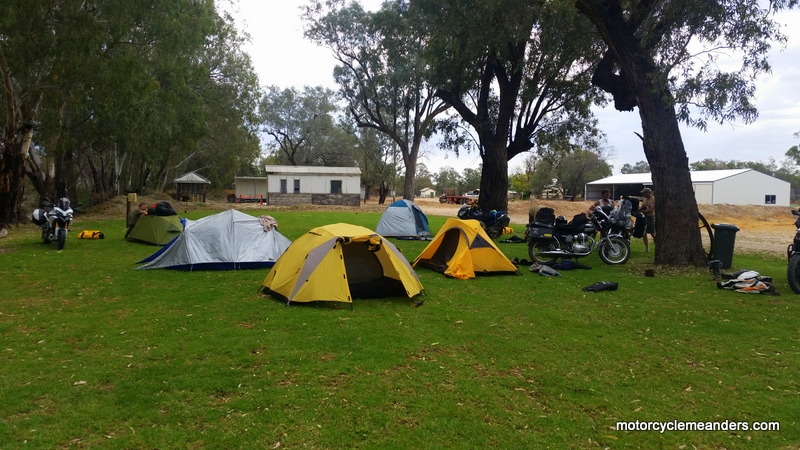 A beggar for punishment, I was drawn to the Oztrail sleeping bags that are also marketed as Outer Limits. At the middle of this narrow road is their Microsmart series. Seems to be a good combination of technology, weight, temperatures, rolled up dimensions and price. One snag is their recommendations for size of bag for size of person (admittedly in an outdated catalogue). They are out of kilter with every other site that addresses that aspect. Not to mention that the length of some of their bags supposedly for an average size man are longer than most 2 person tents. So, you have a 6’ (183cm) person, who Oztrail says needs a 230cm long bag, when most 2 person tents are 210-220cm long!! And they couldn’t or wouldn’t tell me the floor size of the Eclipse 2!
A beggar for punishment, I was drawn to the Oztrail sleeping bags that are also marketed as Outer Limits. At the middle of this narrow road is their Microsmart series. Seems to be a good combination of technology, weight, temperatures, rolled up dimensions and price. One snag is their recommendations for size of bag for size of person (admittedly in an outdated catalogue). They are out of kilter with every other site that addresses that aspect. Not to mention that the length of some of their bags supposedly for an average size man are longer than most 2 person tents. So, you have a 6’ (183cm) person, who Oztrail says needs a 230cm long bag, when most 2 person tents are 210-220cm long!! And they couldn’t or wouldn’t tell me the floor size of the Eclipse 2!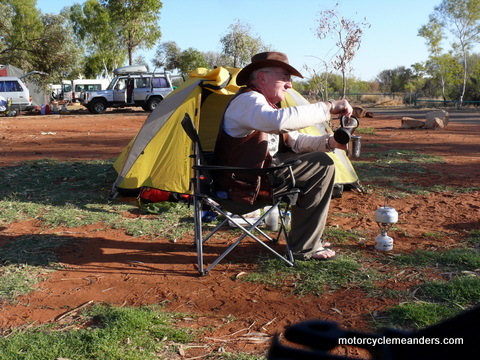
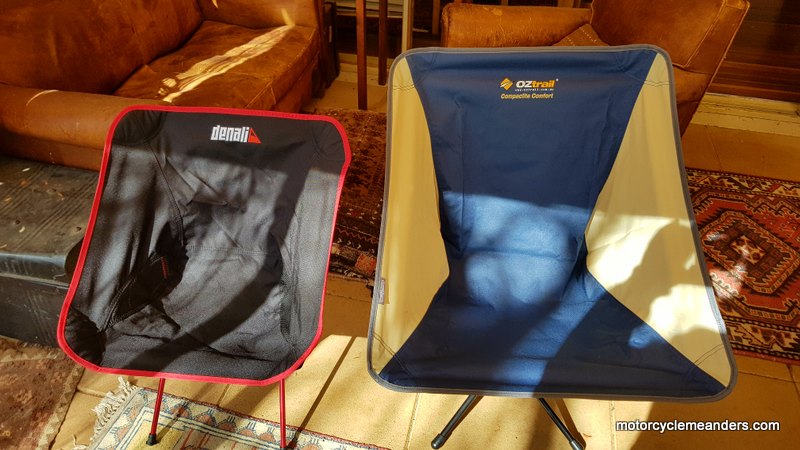
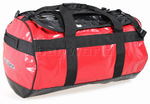
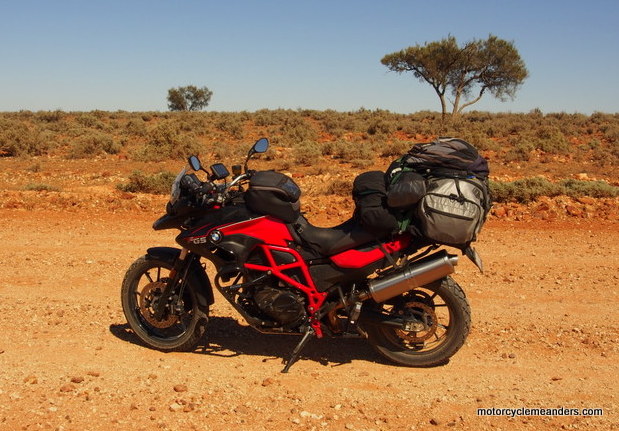 On a more recent camping trip following the
On a more recent camping trip following the 